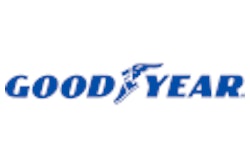Intermodal has hit hard times, but looks to lead industry up from the downturn.
Despite the current global recession, Lee Robinson Jr. is hopeful. Robinson’s the president of both the OHC lumber and flooring company, headquartered in Mobile, Ala., in business since 1967, and the relatively new OHC Intermodal, an intermodal drayage and logistics outfit situated near the Port of Mobile. All the same, on an early-November flight through the southeast over the warehouse distribution sector of Atlanta, Robinson got a bird’s-eye view of the recession – “one of the most horrifying sights I’ve ever seen,” he says. Warehouse after warehouse had a large stockpile of trailers sitting idle. “They were in big blocks, 10 or 15 wide by 10 or 15 deep, at the back of the lots.”
Robinson’s horror is understandable – OHC’s primary business segment is supplying lumber for trailer flooring (his grandfather pioneered the use of wood on flatbed decks in the 1960s, he says). His ultimate hope, however, is perhaps less obvious. His two-year-old, two-truck drayage fleet, OHC Intermodal, today mostly handling import/export containerized cargo for the lumber business out of the new Mobile Container Terminal at Choctaw Point on Mobile Bay, has experienced the same downturn, says OHC driver Dewayne Lamkin. “When we’re busy, we usually haul five or six containers a day out of there,” logging plenty of overtime, he says. Such was the case when he started a little over a year ago, but today, “we’re about as slow as everybody else.”
All the same, the picture for intermodal hauling nationwide is bright going forward, experts agree, particularly if you’re in the eastern United States. As capacity constraints and fear of labor disruptions continue to plague high-volume West Coast ports and with past hurricane disruptions to bulk shipping and rail into the highest-volume break-bulk port at New Orleans high in shippers’ minds, smaller shipments of containerized cargo from Asia to East and Gulf Coast ports and then to truck have and will gain further in relative demand.
“California has continued to have their challenges with labor and with emissions,” says Dave Manning, chairman of the Intermodal Motor Carriers Conference of the American Trucking Associations. “The railroad has continued to go up in price, so the cross-country trek is more expensive. You take all that combined, and you’ve got higher costs.” Getting to the East Coast by ship from Asia, he adds, is a longer transit time. “But if the company can take the transit, there’s a savings to be had. A lot of companies are putting their toes in a lot of different areas so that if there’s a disruption they’ll be OK.”
Sweetening that deal for East Coast ports and intermodal companies is the Panama Canal widening project, scheduled to sunset in 2014. After the project’s completion, the largest container ships from Asia will have a reasonably shorter route to East and Gulf Coast terminals. Considering the cost of intermodal transit from west to east across the U.S. ship lines can be expected to take advantage of all the water mileage they can get.
And though fuel prices are down dramatically as of press time, domestic intermodal movements rose significantly with the 2007-’08 fuel-price hikes, and no one expects the current low fuel prices to last forever. There’s opportunity for drivers going forward anywhere there’s rail, essentially, or a port, which includes a majority of states throughout the country.
The good, the bad and the ugly
For drivers, the attractions of intermodal trucking are many – shorter hauls, semi-regular routes and plenty of home time. Tradeoffs exist, of course. Lamkin spent a decade hauling over-the-road, four of those years as an owner-operator for himself, the others with his father’s Tiera Trucking. Today, he says, with his average haul length all of four miles round-trip from the OHC facility to Mobile Container Terminal and back, his paycheck is a bit smaller than in years past. Still, he calls his move to OHC a good one, chiefly on account of his access to his home and family in nearby Stapleton, Ala. “I pretty much missed my first two kids’ younger years,” he says. With a new child born in summer 2007 and his oldest entering middle school this year, he knew it was time for a change.
Roger Knox, owner-operator of a 2003 Peterbilt 387 based in Haslet, Texas, near the intersection of I-35W and U.S. 287 west-northwest of Dallas, also values the home time his shipper-to-rail intermodal hauling business affords. His regular run is a more lengthy 388-mile round-trip between the Goodyear plant in Lawton, Okla., where he picks up a container full of auto tires, and a rail terminal off I-635 in the Dallas area, where he drops it. “Then I go around the corner to the container lot to grab an empty,” Knox says, “and go right back up to Oklahoma and get another load. There’s not too much in the way of challenges. I’ve got a good company that I pull for [Dallas-based Rhino Transportation] – they keep everything lined up pretty good. I go by my house, too, all during the day. If I want to stop and get a sandwich or I want to knock off for the day it’s not a big deal.”
Other drivers, though, disagree with Knox’s characterization of the dearth of challenges moving containers. Birmingham, Ala.-based Bill Sapp, company driver for Southeast regional intermodal carrier TCW, says weight issues plague the beginner intermodal driver. “If you pull a container you just figure it’ll be top heavy right off the bat,” Sapp says. “The chassis sits up so much higher than a regular dry van, and it’s steel, no aluminum or wood involved.”
The typical 40-foot container load is subject to the same interstate weight restrictions as often much-longer tractor-trailer combinations, thus weight within the containers will tend to have a higher center of gravity, making the risk of rollover higher. “That should change the way you drive going into curves,” says Lamkin, who’s seen numerous rollovers outside the old container terminal at the Alabama state docks in Mobile. “They’re supposed to be running 25 miles per hour, but some don’t.”
Also, the quality of the equipment outside of the operator’s control, both the container and the chassis on which it sits, is a sticky area for many in the industry. Typically owned by the steamship or rail line contracting the owner-operator or fleet to finish the freight move, the container chassis, particularly, is the subject of frequent casual derision from drivers. Locks for the four corners of the container box are frequently











